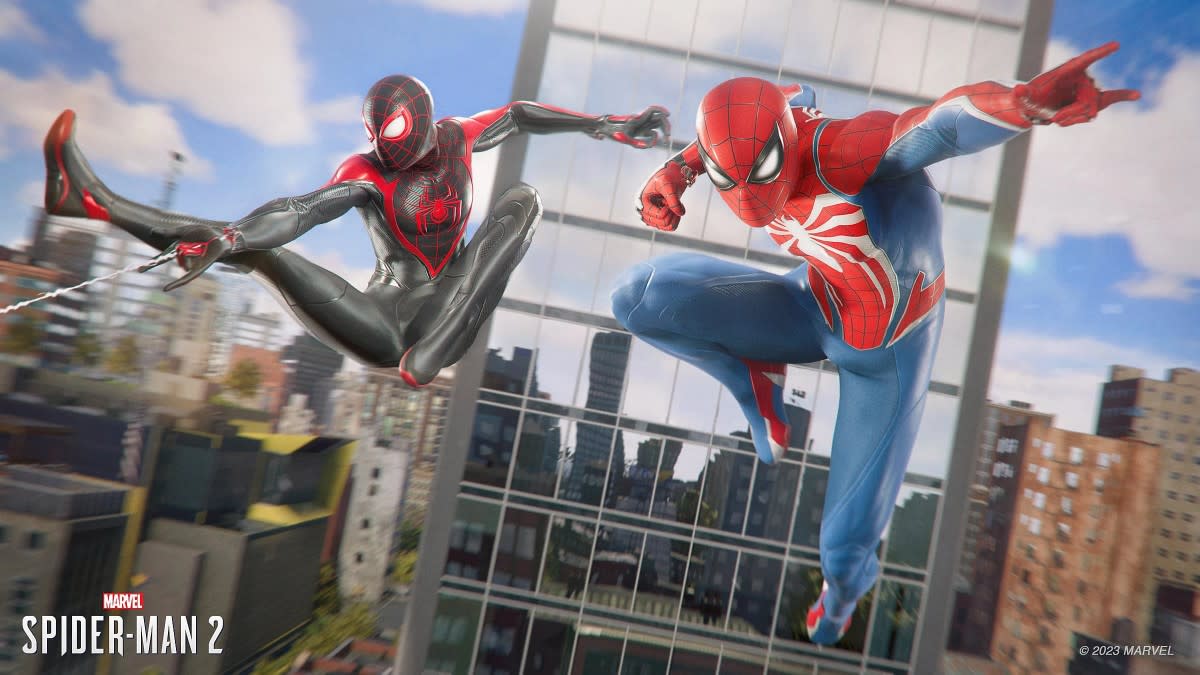Insomniac Tells Us How Spider-Man 2’s New York Got Bigger And Better

Marvel's Spider-Man 2 web-slinging Spider-Men
Marvel’s Spider-Man 2 is out now on the PS5, and there’s no denying that it’s a gorgeous game — that’s part of the reason Spider-Man 2 got such great reviews. Spending just a few minutes within the game’s New York immediately imprints upon you a feeling of great care, attention to detail, and technical prowess from developer Insomniac Games.
Starting with the New York already built and refined in the first two Spider-Man games means that Insomniac had a lot more room to expand upon the tech and the city itself. As project director Jeannette Lee told GLHF, expanding the city came with plenty of challenges, both technically and from a user experience perspective.
“We had this concept of expanding the city,” Lee says, “So we were like, ‘It would be cool if you could go across the river with the wingsuit’. It was a back-and-forth of making sure that there were enough traversal toys across the river to make sure it felt fun, that you wanted to do it, and that it didn't feel like a chore. I think we nailed that.”

Marvel
The PS5’s lightning-quick SSD let Insomniac speed up traversal, with the wingsuit and other tools and powers letting players move through New York – both horizontally and vertically – faster than ever before. This presented a technical challenge: how do you let the player move fast and see so much at once without breaking the immersion with texture pop-in and asset loading?
“We have a whole cascade of different systems that come together to try and preserve detail up close,” core tech director Mike Fitzgerald tells GLHF, “The mid-distance gives you that sense of the same detail without losing anything, and then at the far distance, trying and convince your brain that it's still seeing the same high-detail stuff that far away. All those different systems and ways of rendering need to transition into each other smoothly.”
Fitzgerald says there’s “no magic trick” or silver bullet that can make that happen, it was all about getting all of the ducks in a row.
“It was a lot of time and effort spent just making sure we have consistency in our asset development so that they all break down correctly to the right levels of detail, that our texture streaming knew how to prioritize the things that are close to so that you never see low detail textures.”
Related: Will Marvel’s Spider-Man 2 Get A Venom Spin-Off Game?
This isn’t a one-and-done thing though — as Insomniac builds up this tech in Spider-Man 2, it’s also building a library of techniques and optimizations that can be used for future games. Spider-Man 2’s director told GLHF that collaboration was key for the upcoming Wolverine game, and while Fitzgerald stops short of name dropping Wolverine directly, he does say that the tech used in Spider-Man 2 will likely rear its head again.
“I'm certain some parts of Spider-Man 2 will find their way into future games,” Fitzgerald says, “And I'm not sure we even know what they are yet.”
See more about the tech and visuals behind Marvel’s Spider-Man 2 on videogames.si.com.

